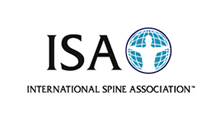
Spine Disorders
|
TREATMENT Most neck pain can be treated without surgery. Treatment may
involve rest, the use of analgesics, reducing inflammation, restoring proper function
and strength to the neck, and preventing recurrence of injury. Most patients
with neck pain recover without residual functional loss. Patients should
contact a doctor if there is not a noticeable reduction in pain and
inflammation after 72 hours of rest and self-care. Although ice and heat (the use of cold and hot compresses) have
never been scientifically proven to quickly resolve neck injury, compresses may help reduce pain
and inflammation and allow greater mobility for some individuals. As soon as
possible following trauma, patients should apply a cold pack or a cold compress
(such as a bag of ice or bag of frozen vegetables wrapped in a towel) to the
tender spot several times a day for up to 20 minutes. After 2 to 3 days of cold
treatment, they should then apply heat (such as a heating lamp or hot pad) for
brief periods to relax muscles and increase blood flow. Warm baths may also
help relax muscles. Patients should avoid sleeping on a heating pad, which can
cause burns and lead to additional tissue damage. Chiropractic treatment: Chiropractic care can offer a very effective
approach for neck pain. The chiropractic physican can administer a variety of
effective conservative approaches to care for neck pain. The approaches include
spinal manipulation, the use of a nutritional anti-inflammatory approach,
physiotherapy, spinal decompression/traction and spinal rehabilitation with the
use of exercise and postural retraining. Exercise may be the most effective way to speed recovery from neck
pain and help strengthen neck and abdominal muscles. Maintaining and building
muscle strength is particularly important for persons with skeletal
irregularities. Doctors and physical therapists can provide a list of gentle
exercises that help keep muscles moving and speed the recovery process. A
routine of neck-healthy activities may include stretching exercises, swimming,
walking, and movement therapy to improve coordination and develop proper
posture and muscle balance. Yoga is another way to gently stretch muscles and
ease pain. Any mild discomfort felt at the start of these exercises should
disappear as muscles become stronger. But if neck pain is more than mild and
lasts more than 15 minutes during exercise, patients should stop exercising and
contact a doctor. |
















